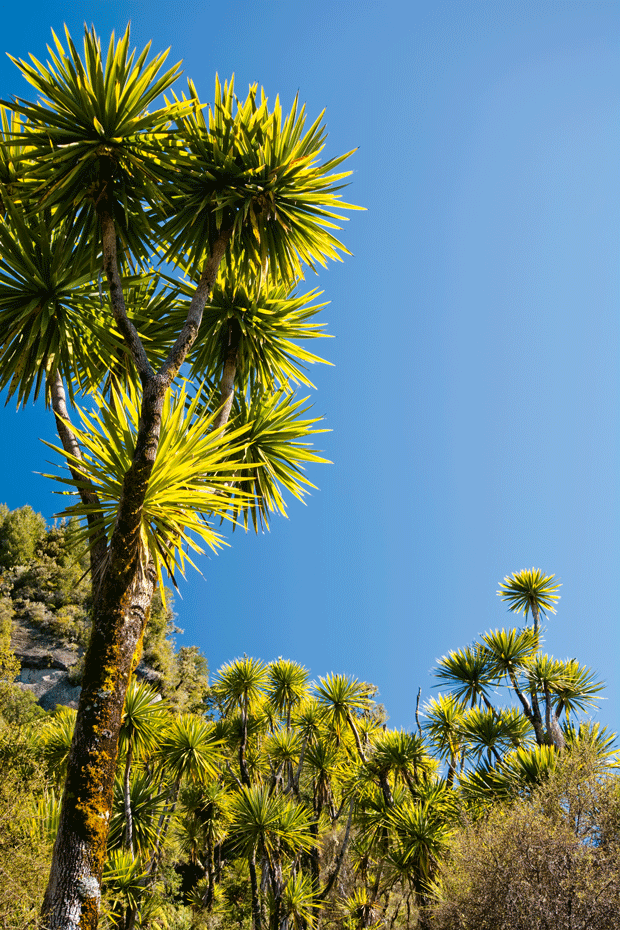tī kōuka (Cabbage Tree)
Where it's found
The cabbage tree/tī kōuka is common throughout farmland, open places, wetlands and scrubland of the North and South Islands, but are rare on Stewart Island.
Cabbage tree/tī kōuka grows up to 1000 metres above sea level in anything from wet swampy ground to dry windy hill slopes. The species prefers full sunlight, so it is common on farms and generally uncommon in tracts of continuous forest (although it is common on forest margins).


Facts
The trunk of the cabbage tree is so fire-resistant that early European settlers used it to make chimneys for their huts. Conveniently, too, the leaves made fine kindling. They also brewed beer from the root.
Cabbage trees are one of the most widely cultivated New Zealand natives and are very popular in Europe, Britain and the U.S. In the U.K. they are known as Torquay palm.
Cabbage trees are good colonising species, growing happily on bare ground or exposed places.
Their strong root system helps stop soil erosion on steep slopes and because they tolerate wet soil, they are a useful species for planting along stream banks.
Māori used cabbage trees as a food, fibre and medicine. The root, stem and top are all edible, a good source of starch and sugar. The fibre is separated by long cooking or by breaking up before cooking.
The leaves were woven into baskets, sandals, rope, rain capes and other items and were also made into tea to cure diarrhoea and dysentery.
Cabbage trees were also planted to mark trails, boundaries, urupā (cemeteries) and births, since they are generally long-lived.
With thanks to the Department Of Conservation as the source for this information and images